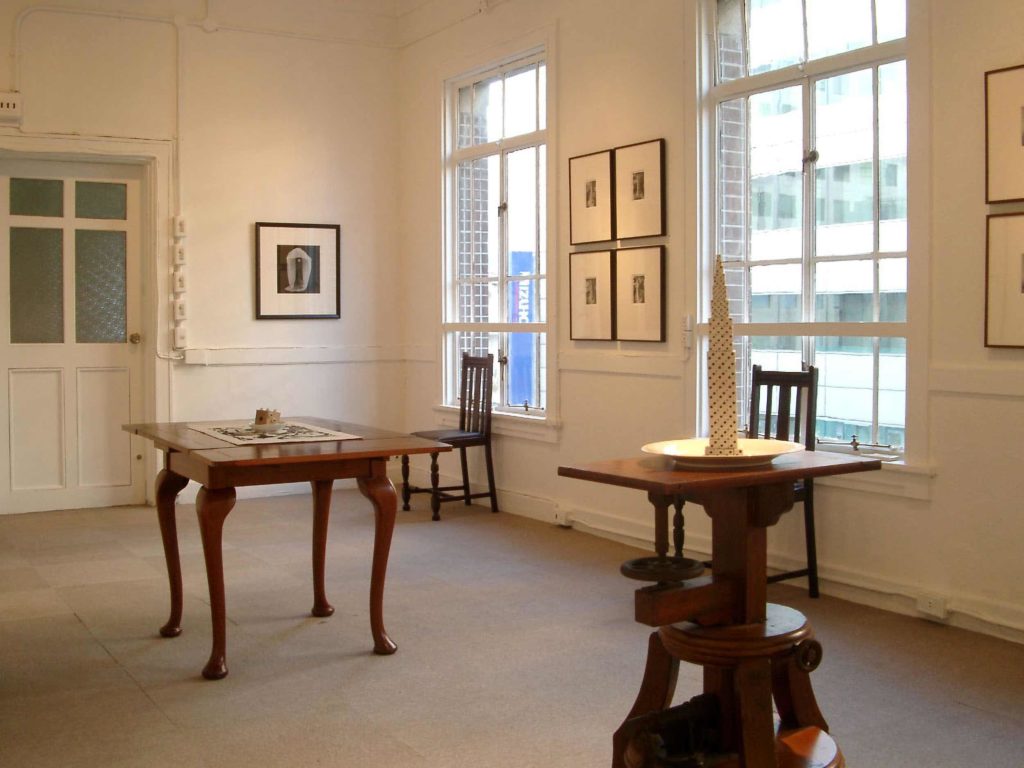
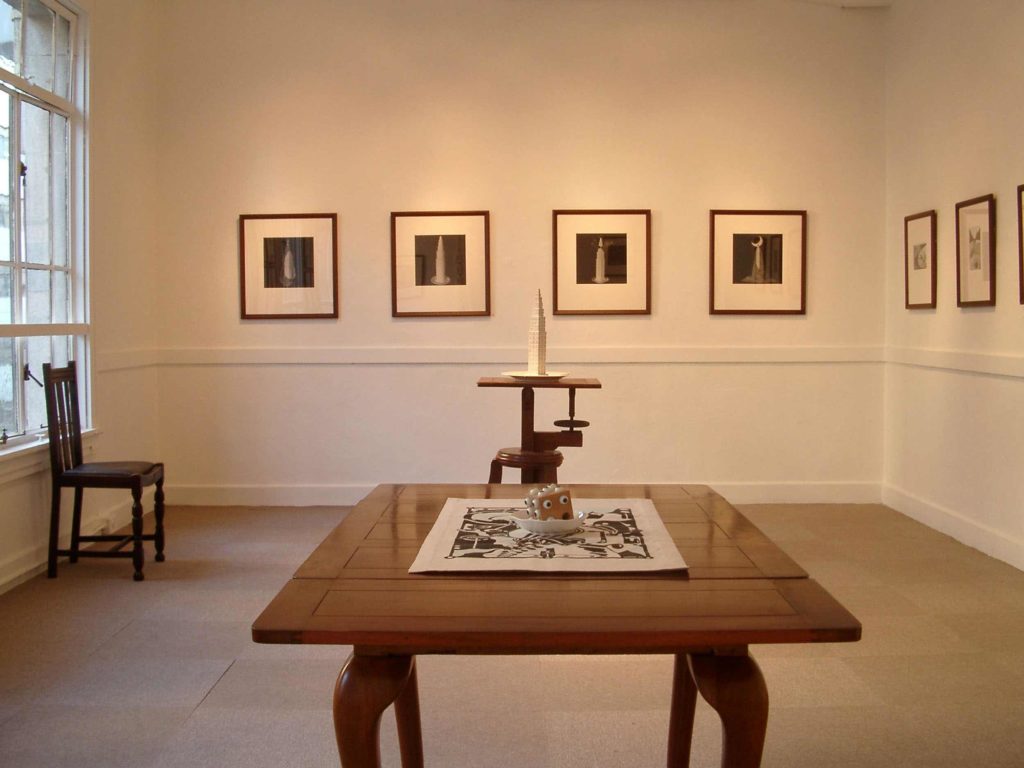
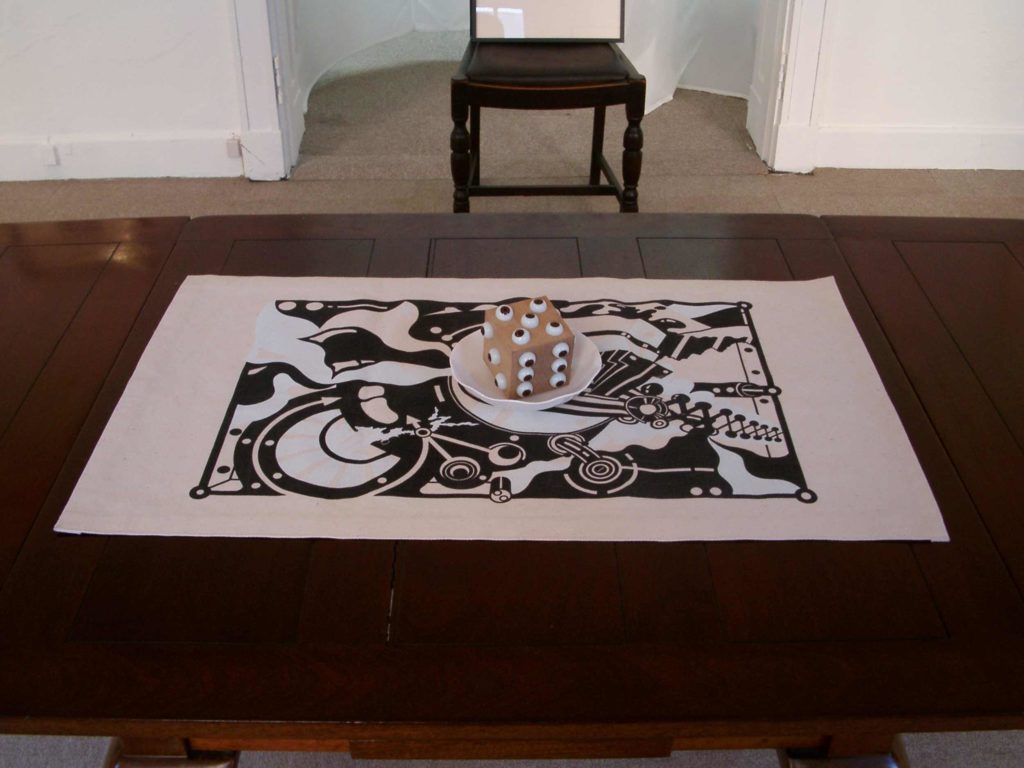
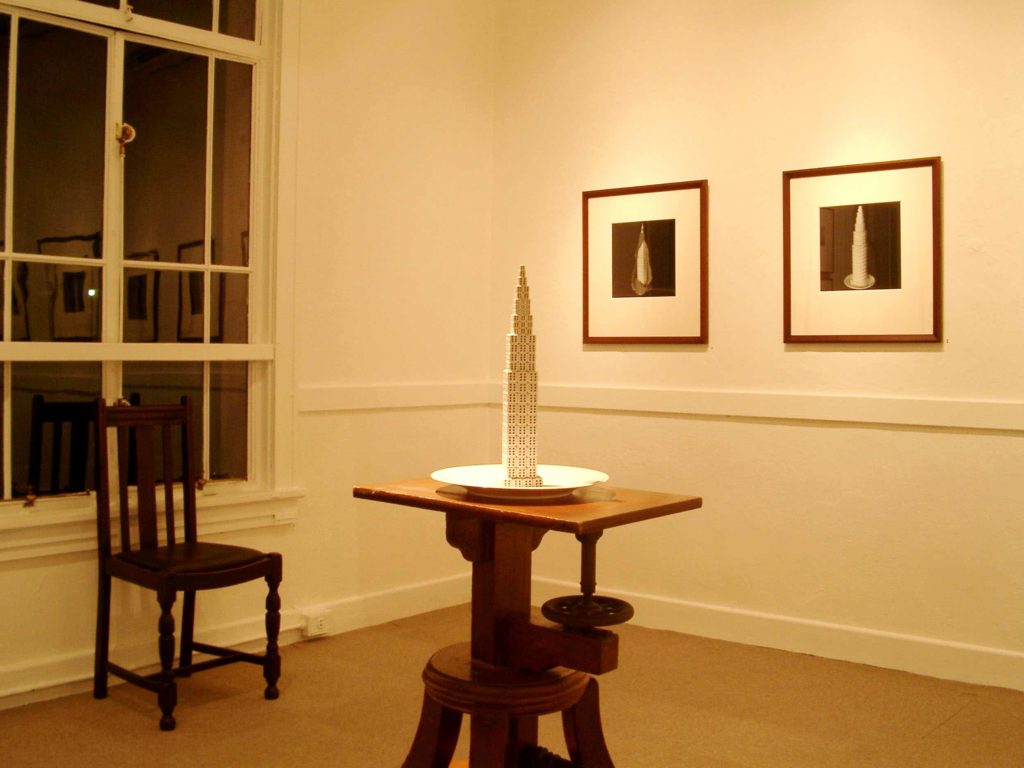
March 28-April 30, 2003
Early still-life photographs from the 1980s.
press release
MEM presents the exhibition Barco Negro on a Table showing early photographic works by Yasumasa Morimura created between 1984 and 1985. Forty nine gelatin-silver prints are displayed that had not been previously exhibited save for six photographs from the City on the Table series and three photos from the Swimming Person series that were shown in a group show in Osaka in 1984. Some additional images included in the exhibition were previously reproduced in publications including the Tower in the Forest series that was used as invitation cards for Comme des Garcons in the 90s. All photographs were newly printed especially for this exhibition.
The compositions in the photographs were carefully constructed on a table in Morimura’s studio using various kinds of objects including tableware, clothes and original small sculptures. It is interesting that Morimura, an artist whose works are highly esteemed as post-modern art, produced a group of constructed photographs influenced by Modernism, comparable to works from the Bauhaus or Russian Constructivist schools.
Background of the early photography of Morimura:
After leaving the Kyoto University of the Arts in 1975, Yasumasa Morimura worked as an assistant to Ernest Sato, professor of Graduate Studies of Art at the same University from 1980 to 1989. Sato, a former photojournalist who had worked for Life magazine, delivered unique lectures on modernist photographers in the 20th century starting with Henri Cartier-Bresson.
“This is not to say he (Sato) was only concerned with photography.” Morimura recalls, “Instead, he used examples of photography in the context of the whole of 20th century art, and these became the base from which he expounded on the aesthetics of Modernism…”(‘Y.Earnest Satow, selected photographs’, 2000, p43). Morimura thus became fascinated by ‘the aesthetics of Modernism’ through Sato’s lectures on the practical skills of photography that included numerous examples of works by modernist photographers.
The photographs from Barco Negro on a Table testifies to the fact that Morimura thoroughly studied modernist photography of the 20th century. He established his own style in his photography by appropriating the structure of modernist works. One of the characteristics in these photographs is that the objects made by Morimura, including a tower made from dice, cut out letters, and a painted board, are used carefully in the images. Although the artist has created numerous objects and small sculptures over the course of his career, he has not included all of them in his photographs.
After creating still-life photographs for a group exhibition in 1984, Morimura noted that he “…felt tired of getting along with ‘art trends’ in the middle of the 80s… As compared with light colored prints by Pop artists and posters in the Marie Laurencin style, which are regarded as suitable for contemporary interior design, the aggressively colored paintings by Van Gogh and the provincial Van Gogh himself seemed to be a symbol of the negative world. Then, I regarded anything related to this ‘Van Gogh world’ as my family and wanted to bark at the world with them…”(from Making of Artist M, 1998, Chikuma-Shobo).
In 1985, Morimura produced Portrait (Van Gogh) appropriating the image of Van Gogh’s famous self-portrait. The work was a milestone in his output that drastically changed the sheer direction of his work. This work marks the beginning of Morimura’s Daughter of Art History period that drew the attention of curators and critics in the Western world. Morimura continued to appropriate images from major paintings by western masters such as Veláquez, Rambrandt, Goya, Cezanne and Manet. He quite literally inserted himself into these paintings, performing not only the persons included within, but also several non-human objects as well.
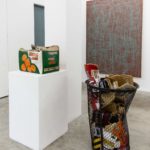 On Mono, Koto and Body – Six Perspectives
On Mono, Koto and Body – Six Perspectives 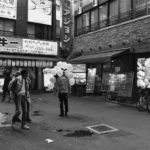 Yasumasa Morimura “High, Red, Central, Action”
Yasumasa Morimura “High, Red, Central, Action”